
Environmental Health
Scope & Guideline
Innovating Solutions for Environmental Health Challenges
Introduction
Aims and Scopes
- Epidemiological Research on Environmental Exposures:
The journal consistently publishes studies examining the links between environmental pollutants (like air pollution, heavy metals, and pesticides) and various health outcomes, utilizing robust epidemiological methodologies. - Impact of Chemical Exposures on Health:
There is a strong emphasis on the health effects of chemical exposures, including endocrine disruptors, persistent organic pollutants, and pharmaceuticals, with a focus on both prenatal and childhood exposures. - Systematic Reviews and Meta-Analyses:
The journal features numerous systematic reviews and meta-analyses that synthesize existing literature on environmental health topics, providing comprehensive insights into specific areas of research. - Community and Public Health Perspectives:
Research often addresses community-level impacts of environmental hazards, highlighting the importance of public health interventions and policies to mitigate risks associated with environmental exposures. - Interdisciplinary Approaches:
The journal encourages interdisciplinary research that combines environmental science, epidemiology, toxicology, and public health to address complex environmental health issues.
Trending and Emerging
- Mental Health Impacts of Environmental Exposures:
There is a rising focus on the links between environmental exposures, particularly air pollution, and mental health outcomes, indicating an expanding recognition of how environmental factors can affect psychological well-being. - Cumulative and Mixture Exposure Assessments:
Research increasingly emphasizes cumulative and mixture assessments of environmental exposures, recognizing that individuals are often simultaneously exposed to multiple pollutants and chemicals. - Climate Change and Health:
The journal is increasingly publishing studies addressing the health impacts of climate change, including extreme weather events and shifts in disease patterns, reflecting a growing concern for how environmental changes influence public health. - Community-Based Participatory Research:
There is a notable increase in community-based participatory research, which actively involves local communities in the research process to address environmental health disparities and improve health outcomes. - Emerging Contaminants and New Technologies:
Research on emerging contaminants, such as PFAS and microplastics, is gaining momentum, alongside studies exploring innovative technologies for exposure assessment and health impact evaluations.
Declining or Waning
- Traditional Industrial Pollutants:
Research focusing on traditional industrial pollutants such as asbestos and lead appears to be less frequent, possibly due to increased regulatory measures and a shift in focus towards newer environmental challenges. - Static Models of Risk Assessment:
There is a noticeable reduction in studies relying solely on static models for assessing environmental health risks, as the field increasingly embraces complex modeling approaches that consider multiple exposures and interactions. - Single Exposure Studies:
The journal has seen a decline in single-exposure studies, with a growing preference for research that examines the cumulative effects of multiple exposures, reflecting a more holistic understanding of environmental health.
Similar Journals
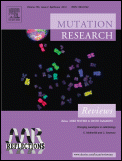
MUTATION RESEARCH-REVIEWS IN MUTATION RESEARCH
Illuminating the Pathways of Mutagenesis ResearchMUTATION RESEARCH-REVIEWS IN MUTATION RESEARCH, published by Elsevier, stands as a premier journal in the fields of Genetics and Health, Toxicology and Mutagenesis, boasting a Q1 ranking in both categories for 2023. With an impressive impact factor and rigorous peer-review process, this journal serves as a vital platform for disseminating cutting-edge research and comprehensive reviews regarding the implications of genetic mutations and related health effects. Established in the Netherlands, it has evolved from its inception in the early 1990s to become an essential resource for researchers, professionals, and students alike, facilitating advancements in the understanding of mutation research. Despite not offering an open-access model, the journal ensures a wide reach through institutional subscriptions, emphasizing its commitment to fostering scholarly dialogue and promoting significant findings within the scientific community.
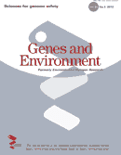
Genes and Environment
Fostering Dialogue on Genetic and Environmental InterplayGenes and Environment is a premier interdisciplinary journal published by BMC that explores the dynamic interplay between genetic factors and environmental influences shaping health and behavior. Since its inception, the journal has gained recognition for its commitment to providing open access (since 2015) to groundbreaking research, fostering an inclusive platform for scholars worldwide. With an ISSN of 1880-7046 and an E-ISSN of 1880-7062, Genes and Environment consistently ranks in Q2 in Environmental Science, Q3 in Genetics, and Q2 in Social Psychology according to the 2023 category quartiles, highlighting its significant contributions to these fields. The journal is headquartered in the United Kingdom and has a diverse portfolio of research spanning from 2006 to 2024. It is recognized in Scopus with commendable rankings across various disciplines. By fostering dialogue among researchers, professionals, and students, Genes and Environment serves as a vital resource for understanding complex biological interactions with environmental factors, ultimately aiming to advance knowledge and inform public policy.
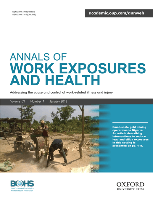
Annals of Work Exposures and Health
Pioneering research on work-related exposures.Annals of Work Exposures and Health, published by Oxford University Press, stands as a leading journal dedicated to the field of public health with a particular focus on environmental and occupational health issues. Since its inception in 2016, the journal has provided a robust platform for disseminating high-quality research, boasting an impressive impact factor that reflects its rigorous peer-review process and significant contribution to advancing knowledge in the field. With its open access model, the journal ensures that critical findings are readily available to researchers, professionals, and students, fostering a collaborative spirit in tackling the challenges associated with work-related health exposures. As of 2023, it ranks in Q2 in its category, positioned within the 69th percentile in Scopus, illustrating its influence and relevance in the ongoing discourse surrounding occupational health. The Annals continues to attract diverse contributions that aim to inform policy and practice, making it an essential resource for anyone involved in public health research and advocacy.

International Journal of Occupational Medicine and Environmental Health
Transforming research into actionable insights for public health.The International Journal of Occupational Medicine and Environmental Health is a distinguished journal dedicated to advancing the fields of occupational medicine and environmental health. Published by NOFER Institute of Occupational Medicine in Poland, this open-access journal has been providing a platform for innovative research since 2011. With an ISSN of 1232-1087 and an E-ISSN of 1896-494X, it allows for wide dissemination of findings that address contemporary challenges in public health, occupational settings, and environmental issues. The journal has established itself as a vital resource, achieving a Q3 ranking in both Medicine (miscellaneous) and Public Health, Environmental and Occupational Health categories as of 2023, reflecting its commitment to quality and relevance. With a Scopus rank of #295 out of 665 in its domain, it places in the 55th percentile, affirming its growing impact within the scientific community. Researchers, professionals, and students seeking to enhance their knowledge and contribute to the discourse will find the rich content and comprehensive studies presented in this journal invaluable. Explore cutting-edge research from 1994 to the present, and join the conversation on occupational and environmental health issues that profoundly affect global communities.

Toxicology and Environmental Health Sciences
Exploring the Nexus of Toxicology and Public HealthToxicology and Environmental Health Sciences is a peer-reviewed journal published by the Korean Society for Environmental Risk Assessment & Health Science, dedicated to advancing the fields of toxicology and environmental health. With an ISSN of 2005-9752 and E-ISSN 2233-7784, this journal serves as a vital platform for researchers, professionals, and students seeking to explore the intricate relationships between environmental risks and public health. Operating from South Korea, it has a converged years span from 2009 to 2024, and currently holds a respectable Q3 quartile ranking in both Health, Toxicology and Mutagenesis and Toxicology. This positions the journal within a critical space for those invested in understanding and mitigating environmental health challenges. Although not an open-access journal, it continues to foster high-impact research, contributing to a better understanding of toxicological sciences and environmental health dynamics. Engage with the latest findings and discussions that shape this evolving field through the insightful articles published herein, reinforcing its importance as a resource for scholars and practitioners alike.

Environnement Risques & Sante
Bridging the Gap Between Ecology and Human Well-beingEnvironnement Risques & Sante is a prominent journal focused on the intersection of environmental issues, public health, and safety, offering a platform for scholarly discourse on the critical challenges posed by environmental risks to human health. Published by JOHN LIBBEY EUROTEXT LTD, this journal aims to disseminate impactful research that enhances our understanding of toxicology, mutagenesis, and their implications for public health policy and practices. Though it ceased coverage in Scopus in 2021, its historical contributions remain relevant, addressing urgent topics in environmental science and occupational health. Researchers and professionals engaged in these fields will find valuable insights and findings that inform practice and promote sustainable solutions. For interested readers, further exploration of the journal can provide essential knowledge in coping with contemporary environmental health challenges.
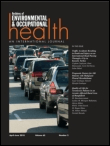
Archives of Environmental & Occupational Health
Elevating the discourse on toxicology and occupational safety.Archives of Environmental & Occupational Health is a prestigious journal published by Routledge Journals, Taylor & Francis Ltd, dedicated to advancing research and knowledge in the realms of environmental science, occupational health, and toxicology. With an ISSN of 1933-8244 and an E-ISSN of 2154-4700, this peer-reviewed journal has gained significant recognition, currently holding a Q2 ranking in Environmental Science and Q3 rankings in Health, Toxicology and Mutagenesis, and Public Health. Established in 2005, it serves as a vital platform for researchers, practitioners, and policymakers alike who aim to address and disseminate findings on pressing environmental and occupational health issues. The journal is not open access, allowing for rigorous peer review processes while still reaching a broad readership. As it converges through 2024, the Archives of Environmental & Occupational Health continues to play a critical role in shaping discourse and fostering innovation in the field, making it an essential resource for those committed to improving both human health and the environment.

Environmental Epidemiology
Exploring the vital connections between environmental factors and health outcomes.Environmental Epidemiology is a leading open-access journal published by Lippincott Williams & Wilkins, dedicated to advancing the field of environmental and public health research. Since its establishment in 2017, this journal has emerged as a vital platform for scholars and practitioners interested in the intricate relationships between environmental factors and health outcomes. With an impressive impact factor reflecting its rigorous peer-review process and a robust Scopus ranking—notably holding Q1 positions in categories such as Health, Toxicology and Mutagenesis, and Public Health—this journal is essential for those seeking to explore the latest findings and methodological advances in environmental epidemiology. Open access since 2018, it ensures wide dissemination of research findings, promoting accessibility and engagement among a global audience of researchers, policymakers, and students. As it continues to converge through 2024, Environmental Epidemiology remains committed to publishing high-quality articles that address pressing environmental health challenges, fostering interdisciplinary collaboration and knowledge sharing that is crucial for developing effective public health interventions.
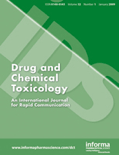
DRUG AND CHEMICAL TOXICOLOGY
Advancing safety through toxicological insights.Drug and Chemical Toxicology is a well-respected journal in the fields of toxicology, pharmacology, and public health, published by Taylor & Francis Ltd. Since its inception in 1978, this journal has diligently explored the effects and mechanisms of chemical exposures on health and the environment, fulfilling a crucial role in advancing scientific understanding and safeguarding public health. The journal is indexed across prestigious databases and features an impressive array of articles categorized within the Q2 and Q3 quartiles across various categories in 2023, reflecting its significance in Chemical Health and Safety as well as Environmental and Occupational Health disciplines. With an extensive reach and a focus on interdisciplinary research, Drug and Chemical Toxicology offers a rich repository of original research, reviews, and methodological advancements, catering to a diverse audience of researchers, professionals, and students dedicated to the betterment of safety and health standards. Although not an open-access publication, its articles are widely accessible to the academic community, ensuring that critical innovations and insights are shared for the greater good.

BIOMEDICAL AND ENVIRONMENTAL SCIENCES
Bridging Knowledge Gaps in Health and Environmental Sciences.Biomedical and Environmental Sciences is a distinguished peer-reviewed journal dedicated to the advancement of knowledge in the fields of health, toxicology, public health, and environmental sciences. Published by the Chinese Center for Disease Control & Prevention, this journal has been a vital platform for researchers and professionals since its inception in 1988, contributing to interdisciplinary discussions and the dissemination of pertinent research findings up to the current year, 2024. With an ISSN of 0895-3988 and an E-ISSN of 2214-0190, it holds a respectable position in the Q3 category for both Health, Toxicology and Mutagenesis, and Public Health, Environmental and Occupational Health, indicating its relevance and contribution to these significant domains. Although this journal does not offer open access, it remains an essential resource for anyone interested in understanding the intricate interplay between biomedical research and environmental health challenges. As it continues to navigate the complexities of contemporary health issues, Biomedical and Environmental Sciences is poised to facilitate vital discussions and innovations in the pursuit of improved public health outcomes globally.